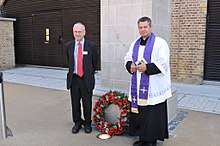North London Railway
| Overview | |
|---|---|
| Headquarters | standard gauge |
North London Railway diagram | |||||||||||||||||||||||||||||||||||||||||||||||||||||||||||||||||||||||||||||||||||||||||||||||||||||||||||||||||||||||||||||||||||||||||||||||||||||||||||||||||||||||||||||||||||||||||||||||||||||||||||||||||||||||||||
|---|---|---|---|---|---|---|---|---|---|---|---|---|---|---|---|---|---|---|---|---|---|---|---|---|---|---|---|---|---|---|---|---|---|---|---|---|---|---|---|---|---|---|---|---|---|---|---|---|---|---|---|---|---|---|---|---|---|---|---|---|---|---|---|---|---|---|---|---|---|---|---|---|---|---|---|---|---|---|---|---|---|---|---|---|---|---|---|---|---|---|---|---|---|---|---|---|---|---|---|---|---|---|---|---|---|---|---|---|---|---|---|---|---|---|---|---|---|---|---|---|---|---|---|---|---|---|---|---|---|---|---|---|---|---|---|---|---|---|---|---|---|---|---|---|---|---|---|---|---|---|---|---|---|---|---|---|---|---|---|---|---|---|---|---|---|---|---|---|---|---|---|---|---|---|---|---|---|---|---|---|---|---|---|---|---|---|---|---|---|---|---|---|---|---|---|---|---|---|---|---|---|---|---|---|---|---|---|---|---|---|---|---|---|---|---|---|---|---|---|
| |||||||||||||||||||||||||||||||||||||||||||||||||||||||||||||||||||||||||||||||||||||||||||||||||||||||||||||||||||||||||||||||||||||||||||||||||||||||||||||||||||||||||||||||||||||||||||||||||||||||||||||||||||||||||||
| |||||||||||||||||||||||||||||||||||||||||||||||||||||||||||||||||||||||||||||||||||||||||||||||||||||||||||||||||||||||||||||||||||||||||||||||||||||||||||||||||||||||||||||||||||||||||||||||||||||||||||||||||||||||||||
The North London Railway (NLR) company had lines connecting the northern suburbs of London with the
History

The East & West India Docks & Birmingham Junction Railway was incorporated by Act of Parliament on 26 August 1846. It was empowered to construct a railway from the district of Poplar and the docks to Camden Town in north London.[1] The railway's headquarters and locomotive works were initially in Bow.
At first, it ran trains from Bow Junction on the
In 1869, the line was extended along the
In 1864, a North London Railway train was the scene of the first murder on a British train.
The LNWR took over the working of the railway under a common management arrangement on 1 February 1909.[4] The company still existed until 1922, with its own board of directors and shareholders, when it was absorbed by the LNWR. The last board meeting and last shareholders meeting were both held on 23 November 1922, the latter giving the shareholders' approval of amalgamation. The board minutes were signed by A Holland-Hibbert, the chairman, who added "Goodbye!". Beneath this was typed, "This was the last Board Meeting of the North London Railway Company, the Undertaking being absorbed under “The London and North Western Railway (North London Railway and Dearne Valley Railway) Preliminary Absorption Scheme 1922” by the London and North Western Railway Company as from 1 January 1922."[5]
The LNWR, which half-owned Broad Street station, was responsible for electrification of the Broad Street to Richmond and Kew Bridge lines in 1916.
Legacy

The Kew Bridge service was withdrawn as a wartime economy measure in 1940, which proved to be permanent.
The line from Dalston Junction to Poplar was heavily damaged during
The Crosstown Linkline service reinstated passenger service over the Dalston Junction to Victoria Park Junction section of the Poplar branch from 14 May 1979, running from Camden Town to Stratford and then over the former Eastern Counties and Thames Junction Railway to North Woolwich. The remaining freight line from Victoria Park Junction to Poplar Docks via Bow Junction closed on 3 October 1983.[3] From 13 May 1985, the Camden to North Woolwich Crosstown Linkline was combined with the Richmond to Broad Street service and ceased to serve Dalston Junction and Broad Street, which finally closed on 30 June 1986.
The line between Willesden Junction and Camden via Primrose Hill is now primarily used (in 2014) for empty coaching stock movements between the
Since 31 August 1987,
The
Stock
Among the first locomotives bought by the railway from outside contractors were five
Workshop
Bow railway works was built in 1853 and had a sizeable wagon repair shop. When the railway was merged into the LMS it was the smallest of 15 workshops. It repaired NLR locomotives and from 1927 those from the former London, Tilbury and Southend Railway (LTSR).
In the 1930s, the works developed and manufactured the Hudd automatic control system for the LTSR, which led to a British Rail (BR) team from the national headquarters setting up in Bow to develop BR's standard Automatic Warning System. The workshop was badly damaged during the Blitz and the wagon workshop destroyed.
In 1956, the workshop repaired diesel-electric locomotives for the motive power depot at Devons Road (the first to become all-diesel). After a while it was receiving locos in the morning and turning them round by the evening, which initially confused the statistical returns since locos were entering and leaving the works on the same day. The works closed in 1960.
Stations

Richmond to Willesden Junction (joined NLR 1856):
- Richmond (opened 1846)
- Kew Gardens (opened 1869)
- Gunnersbury (opened 1869)
- South Acton (opened 1880)
- Acton Central (opened 1853)
- Willesden Junction (opened 1866)
Willesden Junction to Camden via Primrose Hill (opened 1851–2, passenger services between South Hampstead and Camden withdrawn 1992):
- Kensal Green(opened 1916)
- Queen's Park (opened 1879)
- Kilburn High Road
- South Hampstead (Loudon Road until 1922)
- Primrose Hill (Hampstead Road until 1 December 1862, Chalk Farm until 25 September 1950; closed 1992)
Willesden Junction to Camden via West Hampstead & Gospel Oak (opened 1860):
- Kensal Rise
- Brondesbury Park
- Brondesbury
- West Hampstead
- Finchley Road & Frognal
- Hampstead Heath
- Gospel Oak
- Kentish Town West
Camden Road to Dalston (opened 1850):
- Camden Road (Camden Town until 25 September 1950)
- Maiden Lane (closed 1917)
- Caledonian Road & Barnsbury (formerly Barnsbury)
- Highbury & Islington
- Canonbury
- Mildmay Park (closed 1934)
- Dalston Kingsland (closed 1865, reopened 1983)
Dalston to Broad Street (opened 1865, closed 1986, mostly reopened 2010):
- Dalston Junction (closed 1986, reopened 2010)
- Haggerston (closed 1940 with the Poplar Branch, reopened 2010)
- Shoreditch (closed 1940 with the Poplar Branch)
- Broad Street
Dalston to Poplar (opened 1850, closed to passengers 1944, Dalston- Stratford reopened 1980):
- Hackney Central (formerly Hackney, reopened 1980)
- Homerton (reopened 1985)
- Victoria Park
- Old Ford
- Bow
- Fenchurch Street (not served after opening of Broad Street link in 1865)
- South Bromley
- Poplar (East India Dock Road)
Bow to Plaistow (1869 to 1916):
- Bromley
- West Ham(served from 1901)
- Plaistow
At Poplar, the line connected to
Notes
- ISBN 978-0-7110-3346-7.
- ^ Renamed Camden Road on 25 September 1950
- ^ ISBN 978-0-7110-3346-7.
- ^ The National Archives, RAIL 529/32 – NLR Board Minute No 6940 of 14 January 1909
- ^ The National Archives RAIL 529/34 NLR Board Meeting 22 November 1922
External links
- The Camden-Town Railway The Illustrated London News 15 November 1851, p. 603-604 (Tower Hamlets History Society) – An account of a journey on the railway in 1851.
